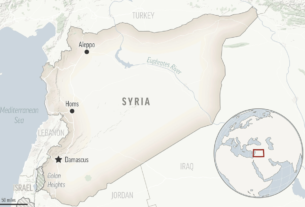Lebanon’s infrastructure remains in ruins, leaving millions of displaced citizens unable to return home. Years of political instability, coupled with the destruction caused by conflicts, have left key infrastructure like roads, hospitals, and schools severely damaged, further complicating the already dire situation for displaced families.
“Returning home is not an option for most of us,” said Ahmed Ali, a Lebanese man displaced from his village. “The roads are destroyed, and the buildings are unsafe. There’s nothing left to come back to.”
The ongoing damage to Lebanon’s infrastructure stems from both recent wars and the country’s long-standing economic crisis. Vital sectors such as healthcare, education, and transportation have taken significant hits, and without the necessary repairs, it will be years before these services can return to normal.
“Many towns and villages have been left with no schools or hospitals,” said a local official. “It’s not just the homes that are destroyed; it’s the entire infrastructure, and rebuilding is nearly impossible without support.”
International aid organizations have been providing temporary relief, but efforts to rebuild have been slow and insufficient. Many displaced families are still living in refugee camps or with relatives in overcrowded conditions, waiting for the day they can return to their homes.
“Some families have been displaced for over five years, and there is no sign of when they can safely go back,” said a spokesperson from the UN Refugee Agency. “The destruction has made it impossible to rebuild quickly.”
The Lebanese government, which is struggling with its own financial troubles, has been unable to provide significant funding for reconstruction efforts. As a result, most rebuilding has been left to NGOs and local communities, who have limited resources.
“We want to go home, but our villages are in ruins,” said one displaced family member. “We can’t rebuild everything on our own, and the government is not helping.”
In the absence of government-led rebuilding efforts, many local groups have stepped in to help repair homes and basic infrastructure. However, the lack of organized support means that only a small fraction of the damage is being addressed, and recovery remains slow.
“We can’t wait forever for the government to act,” said a community leader in a displaced camp. “We are doing our best, but the scale of destruction is so vast that it feels like nothing is ever enough.”
For many displaced families, the lack of infrastructure repair means they have little choice but to remain in uncertain conditions. This prolonged displacement is taking a psychological toll on people who are eager to return to their homes but face constant setbacks.
The Lebanese government has yet to announce a clear plan for large-scale reconstruction, and without international intervention, experts warn that the country will continue to struggle with rebuilding efforts.
“The situation is unsustainable,” said one aid worker. “Until Lebanon can rebuild its infrastructure, people will continue to live in limbo, unable to return to their homes.”
The international community continues to call for greater support to Lebanon’s reconstruction, emphasizing the need for a coordinated approach to rebuilding the country’s vital infrastructure. Without these efforts, the return of displaced persons will remain impossible, and Lebanon’s road to recovery will be far more difficult.




